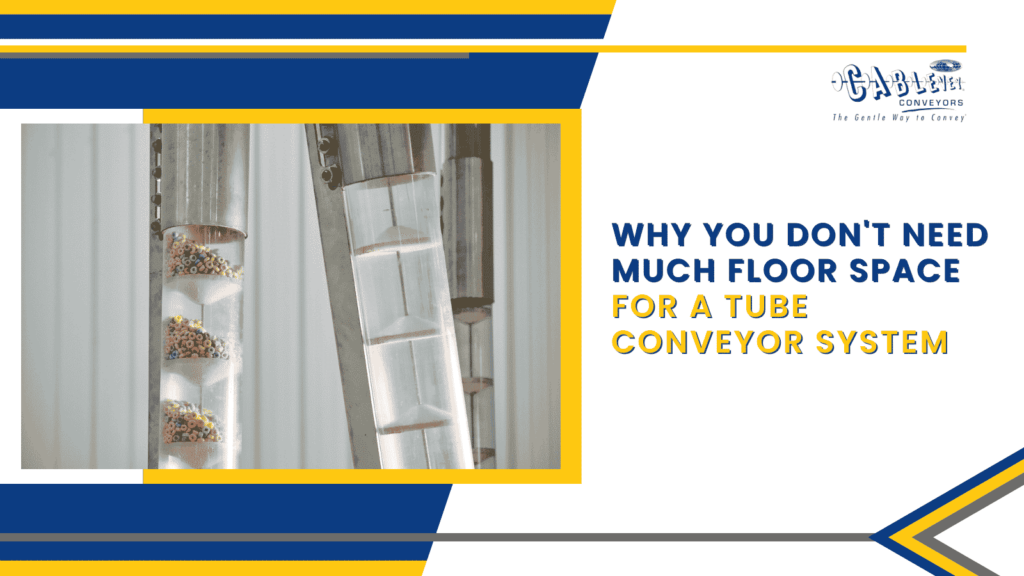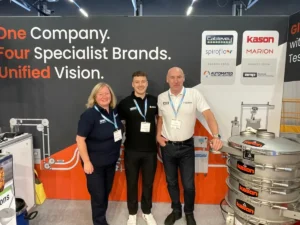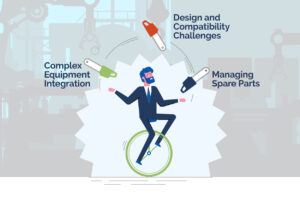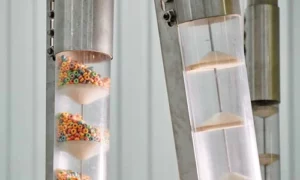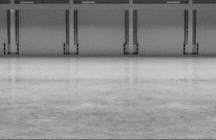The new era of industrial efficiency is here, but space constraints often pose a significant challenge. We’ll discover why you don’t need much floor space for a tube conveyor system and why it’s a game-changer. Join us on a journey where cutting-edge design meets the demands of modern industry, offering a solution that transcends traditional conveyor systems.
Why You Don’t Need Much Floor Space for a Tube Conveyor System?
Tube conveyor systems, like those offered by Cablevey Conveyors, redefine spatial limitations in industrial settings. Their unique tubular design enables efficient cornering, multi-floor conveying, and operation under low ceilings. With a compact footprint and modular adaptability, these systems maximize space utilization, making them the ideal solution for industries facing tight floor space constraints.
Revolutionizing Space Constraints in Industry – The Tubular Conveyor Advantage
Did you know that 31% of managers at industrial facilities cite layout and space requirements as one of the top three factors that limit their ability to convey materials? That statistic is staggering when you think about all of the other factors that could potentially limit production capacity, and it points to a real issue in many modern factories and warehouses.
The bottom line is that companies are often forced to choose between making do with an inadequate facility layout, inadequate conveying equipment, or the cost of expanding their floor space. But what if there was a way to get the benefits of conveyor solutions without all of the hassle and expense that comes with expanding your floor space?
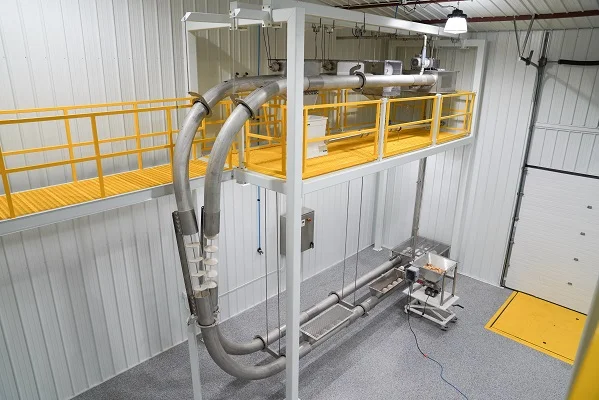
Strategic Space Optimization – Navigating Challenges in Production Facility Layouts
Maximizing the available space is a critical concern for any production facility. It can be particularly challenging in older buildings or cases where the facility is not large enough. To make the most of the space, you need to carefully consider the layout of your production lines and find ways to optimize the use of every square foot. This being said, here are some of the key challenges that you may face when designing an optimal production facility layout.
Conveying at an Angle Is a Breaking Barrier
A conveyor belt system is one of the most widespread types of conveying systems, but it is not ideal for conveying products at an angle. This can be a major issue for companies that need to transport materials around a corner or in and out of different rooms. Conveying at an angle is also necessary when transporting materials up or down a slope.
This is another area where tube conveyors excel. Their curved design lets them easily turn corners and navigate slopes, making them the perfect solution for conveying products in a tight space. Don’t forget the Cablevey Conveyors conveyor installation supervision and cleaning conveyor belts as some of the perks of partnering with us.
Multi-Floor Conveying Is Possible With Tubular Systems
If you have limited space in your production facility, the age-old adage is to think vertically, not horizontally. Expanding your facility upwards is often the best way to make use of the available space. But this presents its challenges, particularly when conveying materials between different floors.
Most traditional conveyor belt systems are not designed for vertical conveying and cannot be easily adapted to this type of setup. Or perhaps you can find vertical conveyors, but you’d have to pair them with a horizontal conveyor to move the products between floors.
Tube conveyor systems manufacturers, however, have thought about this and have made well-suited systems for multi-floor conveying. Their modular design makes them easy to configure for any layout, and they can be easily expanded or shortened to fit the needs of your production facility.
Low Ceiling Height Is No Problem for Modern Conveyor Manufacturing
But what happens if you don’t have the luxury of expanding your facility upwards? In some cases, the only option is to work with what you have and find a way to make the most of a low ceiling height.
This can be a major challenge, as most conveyor systems require a certain amount of headroom to operate safely and efficiently. Fortunately, the low profile of a tubular conveying system allows them to fit under almost any ceiling height, making them a great option for companies that are limited in space.
Long Distances Conveying With Automatic Conveyor System
Certain processing plants, such as beer breweries, require their material to be conveyed over long distances. For example, you might need to transport the same product (such as grain) from the grist case to the hopper and mash tun.
This can be difficult for other manufacturing conveyor systems, such as a screw auger and belt conveyor system, which are not typically designed for long-distance conveying, especially if that involves going around corners. Tube conveyors, however, are perfect for this type of scenario. Their design allows them to move materials quickly and efficiently over long distances without compromising safety or quality.
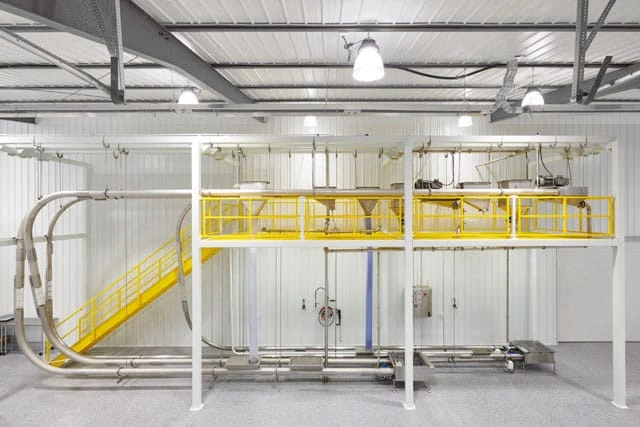
What Are the Consequences of a Poor Layout?
An efficiently designed production facility is the backbone of operational success, but the consequences of a poor layout can reverberate throughout an organization. If your production facility is not laid out efficiently, it can have many negative consequences. Here are some of them.
- Injuries
A poorly designed facility can lead to accidents and injuries. Employees need to have plenty of space to move around without running into obstacles, and there should be no pinch points where people can get caught in machinery.
- Reduced Throughput
If not enough thought is put into the layout, it can easily become congested, and products can back up, decreasing overall production. This can cause a company to lose money and even go out of business in some cases.
- Poor Quality Products
If products are not consistently transported through the facility, it can lead to inconsistencies in the quality of the final product. This can be a major issue for any manufacturer, especially for food processors who need to maintain a high level of quality control.
- Loss of Profit
A poorly designed facility will lead to a loss of profit. Inefficiencies in the production process can add up quickly, and companies that don’t take the time to optimize their layout soon find themselves at a competitive disadvantage.
Find the Most Suitable Solution With Innovative Conveyor Engineering
When choosing the right type, design, and size of conveyor system for your production facility, you will need a certain amount of flexibility to ensure that it can be adapted to your specific needs. Belt conveyor manufacturers surely didn’t think about this. Including screw augers, pneumatic conveyor systems, bucket elevators, or similar, flexibility can be difficult to come by.
On the other hand, tube conveyors are extremely versatile and can be easily adapted to any layout. Their modular design makes them perfect for small- to medium-sized production facilities, and their low profile allows them to fit under almost any ceiling height.
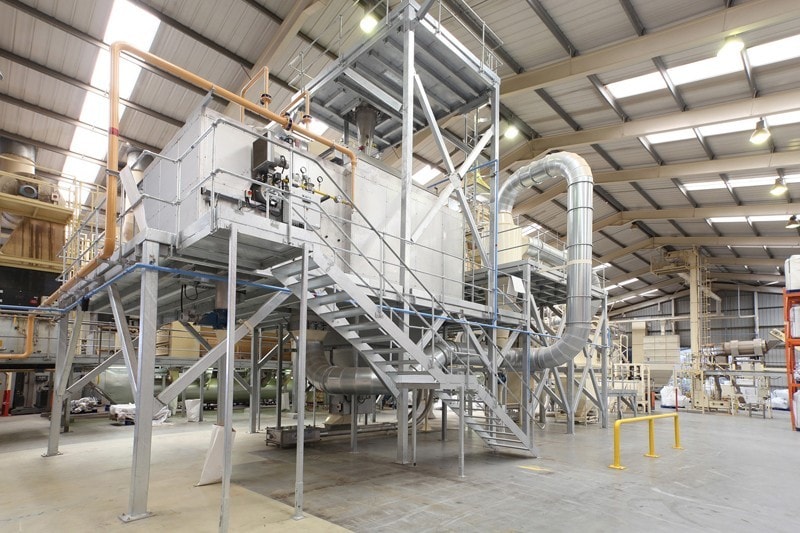
How Modular Conveyor Technologies Can Help You?
What does it mean when a conveyor has a modular design? Modular conveyors can be easily reconfigured to fit any type of space. It doesn’t matter if your production facility is long and narrow or short and wide.
This makes them the perfect choice for companies that are expanding or downsizing and for facilities that are constantly changing and evolving. If your production facility undergoes a change and you need to move the conveyor system to a different location, it can be done quickly and easily.
How Do These Industrial Conveyor Systems Work?
Knowing the mechanics behind these conveyor systems will help you understand how they work and why you actually need them. Cablevey conveyors – tubular drag cable and disc conveyors – consist of several key components, including, but not limited to:
- Drive unit – The drive unit moves the cable thanks to an electric gear motor.
- Funnel – Used for discharging material from cleanouts or rotary discharges.
- Inspection section – A section of the tube made from see-through food-grade plastic. It allows you to check the product as it moves through the system or monitor the tube cleaning process.
- Inlet – Available in a wide range of lengths and slopes; even multiple inlets can be used at the same time.
- Turnaround – For maintaining and tensioning cable, mounted on a mechanism that maintains proper cable tension.
- Discharge – Open or closed or open by degrees to facilitate controlled discharge flow of materials.
These key components can be arranged in any configuration to fit the needs of your production facility. The nature of tubular conveyors allows us to offer maximum customizability without compromising on quality or performance.
Cablevey Automated Conveyor System Will Provide You the Best Manufacturing Process Without Taking Much Space
Depending on where your production facilities are set up, industrial space costs can be quite high. The less space you need, the less you will have to pay in rent. Not to mention all the other benefits that come with using conveyors with a smaller footprint – more optimized production layouts, improved product quality, and a decrease in loss of profit.
When it comes to choosing the right conveyor system for your company, don’t forget to consider the modularity of the design. Tube conveyors are extremely versatile and can be adapted to fit any layout, no matter how tight the space may be. For maximum flexibility, go with a modular tubular conveyor system.If you’re looking for a conveyor system that is both versatile and reliable, consider Cablevey. Our tubular drag cable and disc conveyors are perfect for any production facility, and our modular design allows us to adapt them to all layouts easily. Contact us today to learn more!

